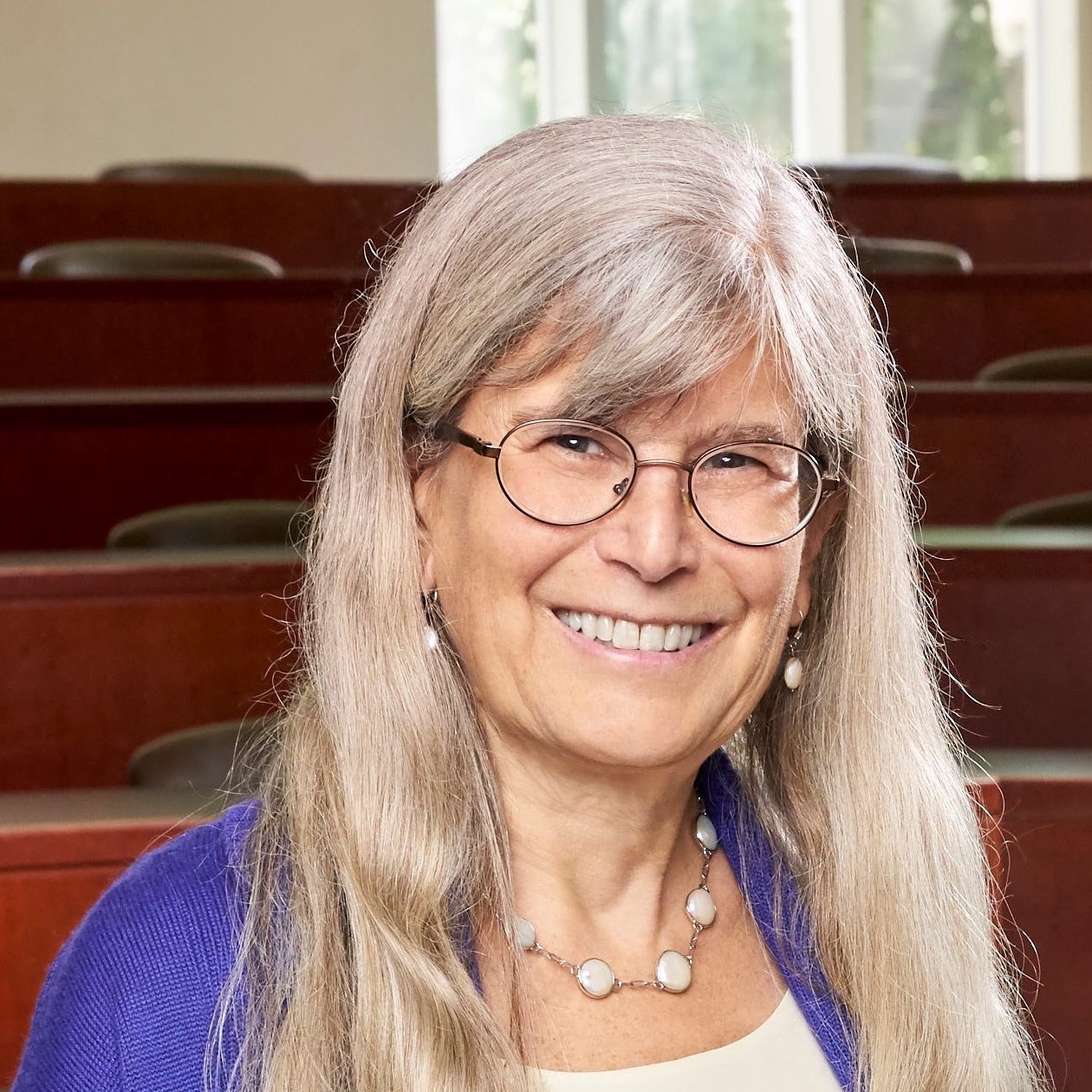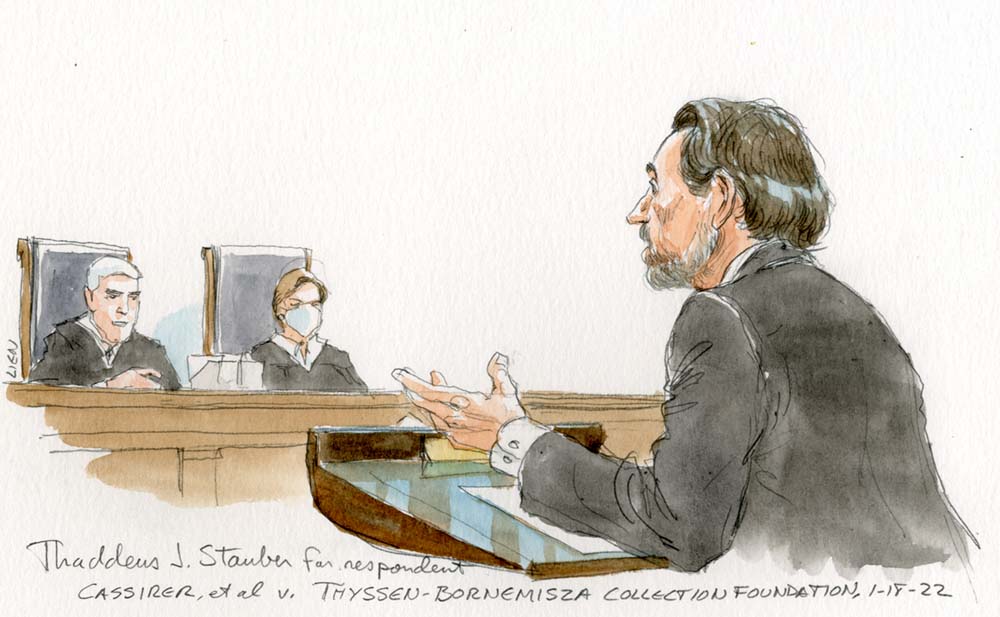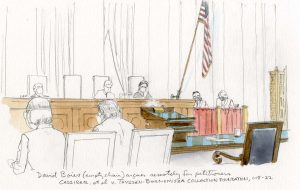ARGUMENT ANALYSIS
Court grapples with choice-of-law doctrines in lawsuit seeking to recover painting taken by Nazis

on Jan 19, 2022 at 12:38 pm

The Supreme Court heard argument on Tuesday in Cassirer v. Thyssen-Bornemisza Collection Foundation. The case was brought by a family seeking to recover a Camille Pissarro painting expropriated by the Nazis and now owned by a Spanish museum. The question before the justices is whether a federal court hearing state law claims under the Foreign Sovereign Immunities Act must apply the state’s choice-of-law rules to determine what substantive law governs the claims at issue, or must instead use federal common law to choose the source of the substantive law.

The case centers on Pissarro’s Rue Saint-Honoré, Afternoon, Rain Effect. (Thyssen-Bornemisza National Museum)
As the case preview explained, Section 1606 of the FSIA provides that when a foreign sovereign or one of its instrumentalities – such as the Spanish museum in this case – is not immune from suit, “the foreign state shall be liable in the same manner and to the same extent as a private individual under like circumstances.” If this case had been brought against a private museum under diversity jurisdiction (which allows federal courts to hear state-law disputes between parties residing in different states or between American and foreign citizens), the court would have applied state choice-of-law doctrines. But under the U.S. Court of Appeals for the 9th Circuit’s precedent, cases brought under the FSIA are different: In those cases, choice of law is governed by federal common law rather than by state law.
Most of the justices did not indicate strong views in their questioning. Indeed, they didn’t ask very many questions at all, especially compared to the extremely lively questioning in the case argued immediately prior to Cassirer, Shurtleff v. City of Boston – the latter’s transcript runs 90 pages to Cassirer’s 64. They did, however, seem to press counsel for the museum somewhat harder than they did counsel for either the Cassirer family or the federal government, which argued in support of the family. The tone of the questions might indicate that they had more difficulty accepting the museum’s arguments.
As expected, several of the justices focused on the language of Section 1606 and the consequences of adopting the 9th Circuit’s position, and seemed skeptical of the museum’s arguments. Both Justice Elena Kagan and Justice Clarence Thomas asked how a sovereign could be treated “in the same manner” as a private party if a different set of laws applied. As Kagan summarized:
[W]hat I take 1606 to essentially be saying is, once you’ve decided that the sovereign immunity doctrines of the FSIA don’t apply, the foreign state really isn’t very special. And your answer to Justice Thomas was essentially to say: Yes, even once sovereign immunity does not apply, the foreign state is extremely special and has to be treated differently.
Justice Stephen Breyer worried that the museum’s approach to choice of law under the FSIA “sounds a little complicated.” Justice Samuel Alito wanted to know who would decide the content of federal common law, and how they would do so; when Thaddeus Stauber, representing the museum, responded that the courts of appeals would do so in the first instance with ultimate recourse to the Supreme Court, Alito stated that doing so “involves serious policy concerns.” And Chief Justice John Roberts suggested that adopting the 9th Circuit’s approach would create the “unusual situation where you’re asking the courts to devise their own body of law.”
On the other side, Thomas, Alito, and Breyer expressed concerns about how a ruling in favor of the Cassirers might affect the foreign policy interests of the United States in other cases. David Boies, who represented the family, and Assistant to the Solicitor General Masha Hansford, who represented the federal government, suggested that foreign policy concerns could be taken into account at the liability stage rather than at the choice-of-law stage. (Boies argued via telephone on Tuesday because he tested positive for COVID-19.) The chief and Justice Sonia Sotomayor echoed that response in their own questions.

David Boies argues remotely for the Cassirer family. (Art Lien)
In some ways, the most interesting parts of the argument will probably turn out to be irrelevant to the decision. If this were a diversity case, Klaxon v. Stentor would require the application of California choice-of-law doctrines. Boies argued that the same result should apply here based primarily on the text of the FSIA but also on the background principles embodied in the Rules of Decision Act (as implemented by the Erie doctrine) that state law applies to state causes of action. Kagan and Justice Amy Coney Barrett wanted to know what Klaxon itself was based on, and Alito suggested that perhaps the Rules of Decision Act was more directly relevant than Section 1606 – all very interesting questions. But none of them indicated how answers to those questions would make a difference to the result. Kagan even said, “I’m not sure my question matters at all.”
Some justices’ questions might be viewed as tentative opinions on issues not raised by this case but possibly at issue in some future case. Roberts pointed out that Klaxon has been subject to criticism, and, as noted, Kagan and Barrett wanted to know the basis for Klaxon; might the court be rethinking the 80-year-old case? Alito also asked a question about how the United States’ argument would change if the court narrowed preemption doctrines, possibly a signal that he hopes to accomplish that narrowing in the future.
There does seem to be at least one point of consensus. Breyer asked counsel for the museum: “Can everyone can agree that it’s a beautiful painting?” Stauber readily agreed. None of the other justices voiced any objection, and we can assume that the Cassirer family and their attorneys agree as well.


